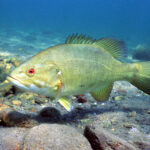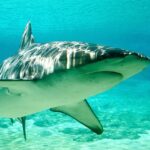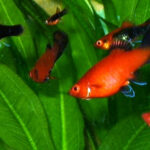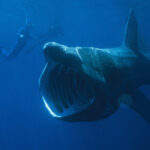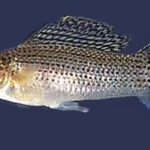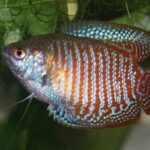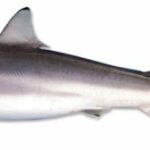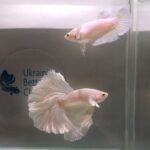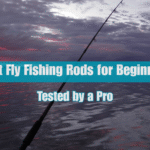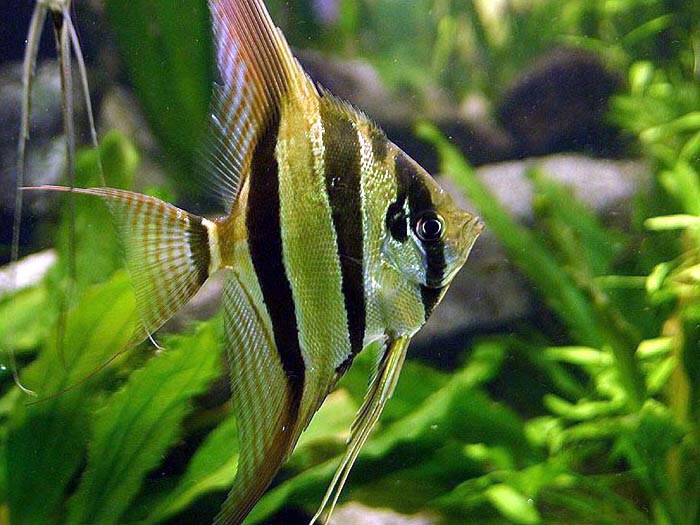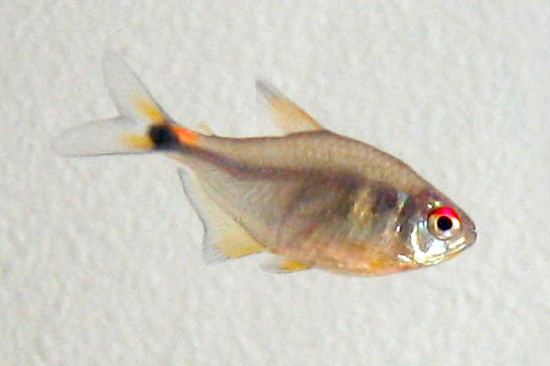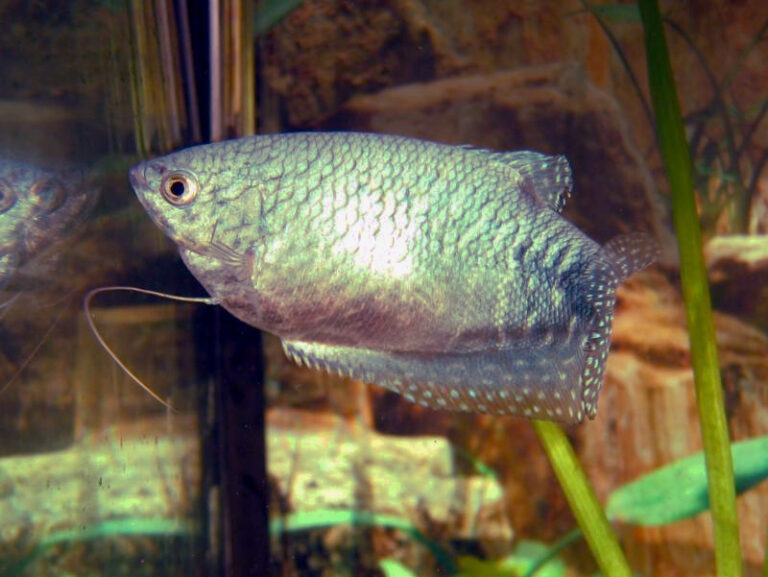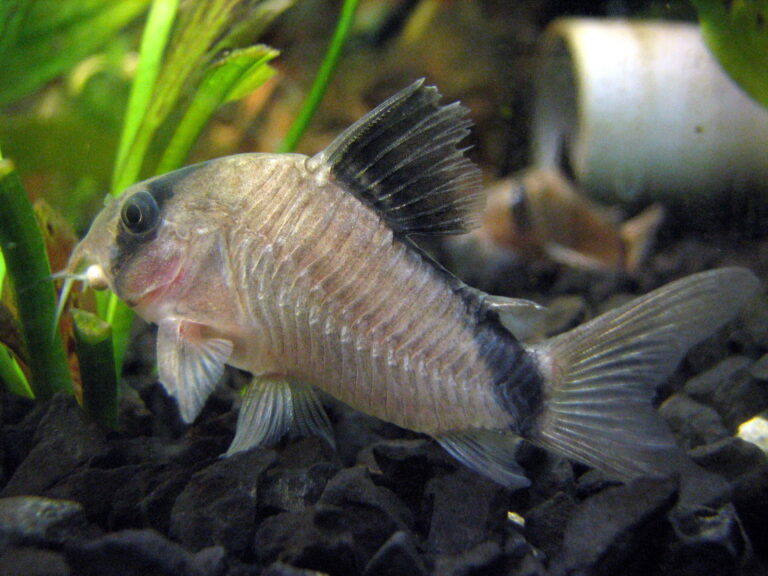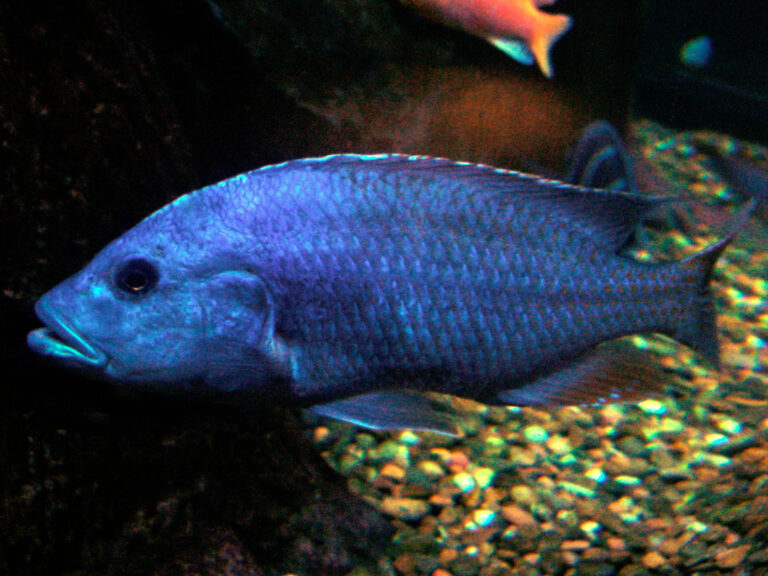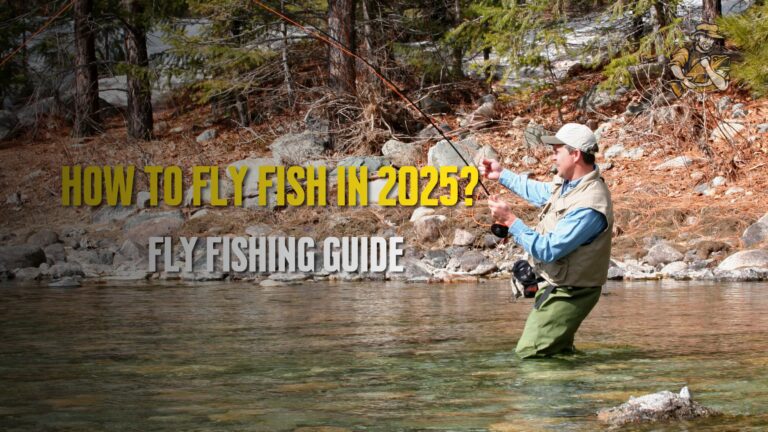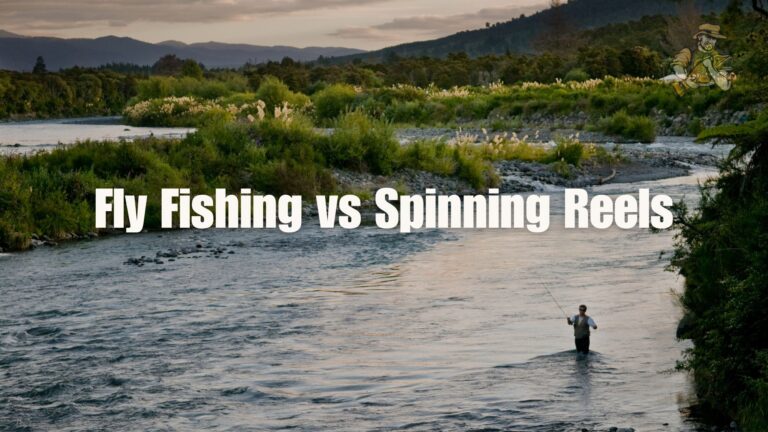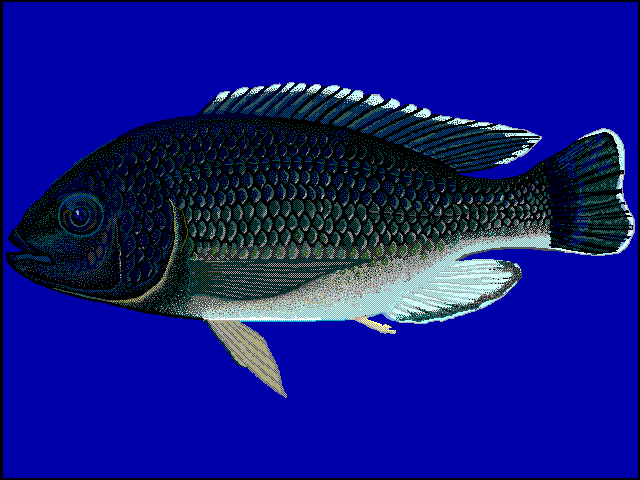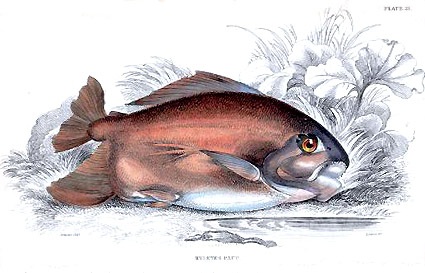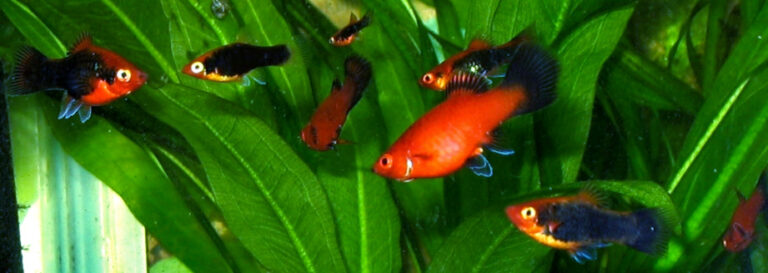Celestial Eye Goldfish
By Ryan Maron | Last Modified: July 3, 2025
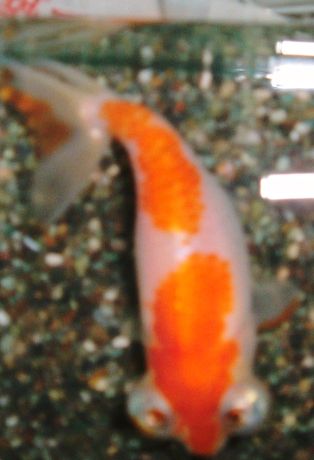
The Celestial Eye Goldfish represents one of the most distinctive varieties within ornamental aquaculture, known scientifically as Carassius auratus. This remarkable goldfish cultivar displays upward-facing eyes that create an almost otherworldly appearance, earning its celestial designation. Beyond its striking aesthetic appeal, the Celestial Eye Goldfish holds significant cultural importance in Asian aquaculture traditions and serves as a fascinating example of selective breeding practices in ornamental fish development.
Within the aquarium trade, this species functions as both a decorative centerpiece and an educational specimen that demonstrates the remarkable plasticity of goldfish genetics. The Celestial Eye Goldfish’s unique morphology has made it a subject of interest among aquarists seeking to understand the relationship between selective breeding and fish physiology. Its specialized eye structure, while visually stunning, creates specific care requirements that distinguish it from more common goldfish varieties.
| Feature | Details |
|---|---|
| Common Name | Celestial Eye Goldfish |
| Scientific Name | Carassius auratus |
| Family | Cyprinidae |
| Typical Size | 15-20 cm, 150-300 grams |
| Habitat | Artificial aquarium environments |
| Diet | Omnivorous, plant and protein matter |
| Distribution | Captive-bred worldwide |
| Conservation Status | Domesticated variety |
Taxonomy & Classification
The Celestial Eye Goldfish belongs to the family Cyprinidae within the order Cypriniformes, sharing its taxonomic foundation with all goldfish varieties. As a cultivated form of Carassius auratus, it represents centuries of selective breeding that originated from the Prussian carp lineage. The species classification places it among the most extensively modified ornamental fish varieties, with genetic markers indicating significant divergence from wild-type goldfish populations.
Taxonomically, the Celestial Eye Goldfish demonstrates the remarkable phenotypic plasticity inherent within the Carassius genus. Its classification as a variety rather than a distinct species reflects the underlying genetic unity with other goldfish varieties, despite dramatic morphological differences. Recent phylogenetic studies have confirmed that all goldfish cultivars, including the Celestial Eye, share common ancestry with wild Carassius auratus populations from East Asian river systems.
The breed’s formal recognition within aquaculture circles dates to the early 18th century, though selective breeding practices likely began much earlier. Modern genetic analysis reveals that Celestial Eye Goldfish maintain the typical diploid chromosome count of 2n=100, consistent with other goldfish varieties. This chromosomal stability has enabled successful breeding programs while preserving the distinctive upward-facing eye trait that defines the variety.
Within the broader context of ornamental fish classification, the Celestial Eye Goldfish represents what geneticists term a “fancy” goldfish variety, distinguished by significant morphological deviation from the ancestral body plan. These modifications include not only the characteristic eye orientation but also altered cranial structure, modified swim bladder positioning, and changes to overall body proportions that influence swimming behavior and spatial orientation.
Physical Description
The most defining characteristic of the Celestial Eye Goldfish involves its dramatically upward-oriented eyes, which rotate during early development to face skyward rather than forward. This remarkable feature results from selective breeding that has modified the normal eye socket orientation, creating telescopic eyes that protrude from the skull and maintain a permanently upward gaze. The eyes themselves often measure 8-12 millimeters in diameter, significantly larger than those found in standard goldfish varieties.
Body morphology in Celestial Eye Goldfish typically exhibits a rounded, egg-shaped profile that lacks the dorsal fin present in most other goldfish varieties. This absence of the dorsal fin creates a smooth, curved back line that enhances the celestial appearance when viewed from above. Adult specimens generally reach lengths of 15-20 centimeters, with body depth often approaching 60-70% of total length, creating a distinctly compact, robust appearance.
Coloration patterns in Celestial Eye Goldfish display considerable variation, ranging from traditional orange and gold hues to more exotic combinations including calico, white, black, and bi-color arrangements. The scales typically exhibit a metallic sheen, though some breeding lines produce nacreous or matte finish varieties. Scale structure follows the standard goldfish pattern, with approximately 25-30 scales along the lateral line and characteristic large, overlapping scales that provide the species’ distinctive appearance.
The cranial region shows significant modification compared to standard goldfish, with an enlarged, dome-shaped head that accommodates the altered eye positioning. This cranial modification often affects the mouth positioning, creating a slightly downward-oriented feeding apparatus that influences foraging behavior. Fin development typically includes well-developed pectoral, pelvic, anal, and caudal fins, with the caudal fin often displaying elaborate trailing edges that enhance the variety’s ornamental appeal.
Habitat & Distribution
The Celestial Eye Goldfish exists exclusively within artificial aquarium environments, having been developed through selective breeding programs that began in China during the Ming Dynasty. Unlike wild goldfish populations that inhabit natural water bodies, this variety has never established feral populations due to its specialized morphology and reduced survival capabilities in natural environments. Modern distribution encompasses global aquarium markets, with major breeding operations concentrated in Asia, North America, and Europe.
Optimal habitat conditions for Celestial Eye Goldfish require carefully controlled aquarium parameters that accommodate their unique physiological needs. Water temperatures between 18-22°C provide ideal conditions, though the species can tolerate slightly broader ranges with proper acclimatization. pH levels should maintain neutral to slightly alkaline conditions, typically ranging from 7.0-7.8, while water hardness parameters function best within 150-300 ppm total dissolved solids.
Tank design considerations become critical due to the variety’s upward-facing eyes and modified swimming capabilities. Environments should minimize sharp edges, protruding decorations, and overhead obstacles that could cause injury to the prominent eyes. Substrate selection typically favors fine sand or smooth gravel materials that prevent damage during bottom-feeding activities. Water circulation systems require careful calibration to provide adequate filtration without creating excessive current that might stress these less efficient swimmers.
Commercial breeding facilities maintain specialized environments that optimize reproduction and development of the celestial eye trait. These operations typically utilize large, shallow ponds or extensive aquarium systems with controlled lighting, temperature regulation, and sophisticated filtration technology. The geographic distribution of breeding operations reflects both historical aquaculture traditions and modern market demands, with significant production centers in China, Japan, Thailand, and the United States.
Diet & Feeding Behavior
Celestial Eye Goldfish maintain omnivorous feeding habits characteristic of their Carassius auratus heritage, consuming a diverse array of plant matter, small invertebrates, and prepared aquarium foods. Their feeding behavior exhibits adaptations related to their upward-facing eyes, which limit their ability to locate food items positioned above their heads. This anatomical constraint necessitates feeding strategies that emphasize bottom-dwelling prey items and sinking food preparations.
Natural foraging behavior involves systematic bottom exploration using highly developed chemoreceptors located around the mouth and gill areas. These sensory adaptations compensate for the visual limitations imposed by the upward eye orientation, allowing effective location of food sources through chemical detection. The species demonstrates particular efficiency in locating benthic organisms, plant detritus, and small crustaceans that comprise significant portions of their natural dietary preferences.
Captive feeding protocols typically emphasize high-quality commercial preparations specifically formulated for fancy goldfish varieties. Optimal nutrition requires balanced combinations of protein sources (35-40%), carbohydrates (30-35%), fats (8-12%), fiber (4-6%), and essential vitamins and minerals. Feeding frequency should occur 2-3 times daily in small portions that prevent overfeeding and subsequent water quality degradation. Sinking pellet formulations prove more suitable than floating varieties due to the species’ bottom-oriented feeding behavior.
Specialized dietary supplements often include live or frozen foods such as bloodworms, brine shrimp, daphnia, and tubifex worms that provide essential nutrients and encourage natural foraging behaviors. Vegetable matter including blanched peas, spinach, and commercial algae preparations supply necessary fiber and plant-based nutrients. Feeding behavior studies indicate that Celestial Eye Goldfish require approximately 15-20% longer feeding periods compared to standard goldfish varieties due to their modified sensory capabilities and reduced feeding efficiency.
Behavior & Adaptations
The behavioral repertoire of Celestial Eye Goldfish reflects significant adaptations to their modified anatomy, particularly the constraints imposed by upward-facing eyes and altered body proportions. Swimming patterns typically involve slower, more deliberate movements compared to standard goldfish, with increased reliance on bottom-following behaviors that utilize tactile and chemical sensors for navigation. These adaptations represent evolutionary responses to artificial selection pressures that prioritized visual appeal over swimming efficiency.
Social behavior within groups demonstrates typical goldfish schooling tendencies, though interaction patterns show modifications related to their limited visual field. Individual fish often maintain closer proximity to tank mates, relying more heavily on lateral line sensory input and chemical communication for social coordination. Hierarchical structures within groups tend to be less pronounced than in standard goldfish populations, possibly due to reduced visual cues that normally establish dominance relationships.
Spatial orientation abilities show interesting adaptations to compensate for the upward eye positioning. Celestial Eye Goldfish develop enhanced reliance on gravitational sensors within the inner ear system, improving their ability to maintain proper swimming orientation despite limited forward vision. Navigation through complex environments relies heavily on memorized spatial patterns and chemical landmark recognition rather than visual navigation methods employed by other goldfish varieties.
Stress response behaviors include increased bottom-resting activities and reduced exploration when environmental conditions become suboptimal. The species demonstrates lower tolerance for sudden environmental changes compared to hardier goldfish varieties, reflecting the physiological costs associated with their specialized morphology. Temperature fluctuations, water quality changes, and physical disturbances typically elicit more pronounced stress responses, requiring careful environmental management to maintain optimal welfare conditions.
Reproduction & Life Cycle
Reproductive biology in Celestial Eye Goldfish follows the standard goldfish pattern, with seasonal breeding cycles typically triggered by temperature increases and photoperiod changes that simulate spring conditions. Sexual maturity occurs at approximately 12-18 months of age, depending on environmental conditions and nutritional status. Males develop breeding tubercles on the gill covers and pectoral fins during spawning season, while females exhibit increased abdominal fullness as eggs develop.
Courtship behavior involves typical goldfish spawning rituals, though the upward-facing eyes may influence visual communication aspects of mate selection. Males pursue females through the spawning environment, exhibiting characteristic chasing and nudging behaviors that stimulate egg release. Spawning typically occurs in shallow areas with fine-leaved vegetation or spawning mops that provide suitable substrate for egg attachment.
Egg production varies considerably among individual females, with typical clutches ranging from 1,000-5,000 eggs depending on age, size, and nutritional condition. Fertilization rates in controlled breeding environments typically achieve 70-85% success when optimal water conditions and spawning substrates are provided. Embryonic development proceeds according to standard goldfish timelines, with hatching occurring after 4-7 days at temperatures between 18-22°C.
Larval development presents unique challenges for Celestial Eye Goldfish breeding programs, as the characteristic upward eye orientation develops gradually during the juvenile growth phase. Not all offspring display the desired celestial eye trait, with breeding success rates for true-to-type individuals typically ranging from 30-60% depending on parental genetics. Professional breeding operations employ selective culling practices to maintain breed standards, though this raises ethical considerations regarding the welfare of fish with extreme morphological modifications similar to other specialized goldfish varieties.
Predators & Threats
In natural environments, Celestial Eye Goldfish would face significant predation pressure from various aquatic and terrestrial predators, though their exclusive existence in captive environments eliminates most natural predation risks. The species’ modified anatomy and reduced swimming efficiency would make them particularly vulnerable to predation by larger fish, aquatic birds, and mammalian predators that commonly target goldfish populations in wild or pond settings.
Within aquarium environments, the primary threats to Celestial Eye Goldfish involve environmental stressors and husbandry-related challenges rather than predation. Poor water quality represents the most significant threat, with ammonia and nitrite toxicity causing particular problems due to the species’ sensitivity to chemical pollutants. Rapid temperature changes, inadequate filtration, and overcrowding create stress conditions that compromise immune function and increase susceptibility to pathogenic infections.
Disease pressures include common goldfish ailments such as ich, fin rot, swim bladder disorders, and bacterial infections that may prove more severe in Celestial Eye varieties due to their compromised physiological condition. The prominent eyes are particularly susceptible to mechanical injury and secondary bacterial infections that can result in vision loss or systemic health problems. Fungal infections often target damaged tissue around the eye areas, requiring immediate intervention to prevent serious complications.
Tank mate compatibility issues present ongoing challenges, as more aggressive or active fish species may stress or injure Celestial Eye Goldfish through competitive interactions or accidental contact with their protruding eyes. Inappropriate aquarium decorations, sharp edges, and inadequate environmental design contribute to injury risks that affect this variety more severely than hardier goldfish types. Long-term breeding practices that emphasize extreme morphological traits may also compromise overall health and survival capabilities across successive generations.
Conservation Status
The Celestial Eye Goldfish, as a domesticated variety of Carassius auratus, does not possess a formal conservation status under traditional wildlife protection frameworks. However, the preservation of genetic diversity within ornamental goldfish breeding lines represents an important consideration for maintaining the long-term viability of these specialized varieties. Breeding programs worldwide work to maintain genetic diversity while preserving the distinctive traits that define the Celestial Eye variety.
Genetic bottlenecks represent a significant concern within specialized goldfish breeding populations, as selective breeding for extreme traits often reduces overall genetic diversity. Professional breeding operations increasingly recognize the importance of maintaining broad genetic bases to prevent inbreeding depression and associated health problems. International cooperation among breeding facilities helps maintain genetic exchange that supports long-term population viability.
The welfare implications of breeding fish with extreme morphological modifications have attracted increasing attention from animal welfare organizations and veterinary professionals. Critics argue that the upward-facing eyes and associated anatomical changes compromise the fish’s quality of life and natural behaviors. This perspective influences breeding practices and market demand in regions with stronger animal welfare regulations.
Conservation efforts for the parent species, wild Carassius auratus, remain important for maintaining the genetic foundation from which all goldfish varieties derive. Habitat protection for wild goldfish populations in East Asian river systems helps preserve the genetic resources that may prove valuable for future breeding programs and genetic research. Climate change and habitat destruction threaten wild populations, potentially limiting future genetic diversity available for ornamental breeding programs.
Human Interaction
The relationship between humans and Celestial Eye Goldfish spans several centuries of selective breeding, cultural significance, and ornamental aquaculture development. Originating in Chinese imperial courts during the Ming Dynasty, these fish held symbolic importance representing prosperity, good fortune, and celestial connections that influenced their continued cultivation and refinement. Modern human interactions encompass commercial aquaculture, hobbyist breeding, and educational applications that demonstrate principles of genetics and selective breeding.
Commercial aquaculture operations worldwide maintain breeding programs specifically dedicated to Celestial Eye Goldfish production, with significant economic value generated through international trade. The global ornamental fish industry values these specimens as premium products, with high-quality breeding stock commanding substantial prices in specialized markets. Professional breeding facilities employ sophisticated genetic management practices to maintain breed standards while producing commercially viable quantities for aquarium trade distribution.
Hobbyist communities centered around fancy goldfish varieties maintain active networks for sharing breeding techniques, genetic information, and welfare best practices. These communities often serve as important repositories of knowledge regarding optimal care protocols, feeding strategies, and environmental management techniques specifically adapted for Celestial Eye Goldfish requirements. Online forums and specialized publications facilitate information exchange that benefits both casual aquarists and serious breeding enthusiasts.
Educational applications utilize Celestial Eye Goldfish as demonstration organisms for teaching genetics, selective breeding principles, and the relationship between morphology and function in aquatic environments. University aquaculture programs and marine biology courses often reference these fish as examples of human-directed evolution and the consequences of extreme selective breeding. Research applications investigate the genetic mechanisms underlying the celestial eye trait, contributing to broader understanding of developmental biology and morphological evolution, similar to studies conducted on other selectively bred aquarium species.
Predators & Threats
Environmental threats to Celestial Eye Goldfish populations primarily involve aquarium management challenges rather than natural predation, given their exclusive existence in captive environments. Water quality deterioration represents the most significant threat category, with particular sensitivity to ammonia accumulation, nitrite spikes, and pH fluctuations that can rapidly compromise health in these physiologically modified fish. Their reduced swimming efficiency and compromised sensory capabilities make them more vulnerable to environmental stressors compared to hardier goldfish varieties.
Mechanical injury risks increase substantially due to the prominent, upward-facing eyes that lack the protection afforded by normal eye positioning. Tank decorations, feeding equipment, and even routine maintenance activities can cause serious eye trauma that may result in permanent vision impairment or secondary infections. Sharp substrate materials, protruding ornaments, and inadequate tank design contribute to injury frequencies that exceed those observed in standard goldfish populations.
Infectious disease pressures affect Celestial Eye Goldfish more severely than many other aquarium species, with bacterial, viral, and parasitic pathogens causing disproportionate mortality rates. Common goldfish diseases such as ich, velvet, fin rot, and swim bladder infections often progress more rapidly and respond less effectively to treatment in these modified varieties. The stress associated with their anatomical constraints appears to compromise immune system function, increasing susceptibility to opportunistic pathogens.
Husbandry-related threats include inadequate nutrition, overcrowding, temperature fluctuations, and inappropriate tank mate selections that create chronic stress conditions. Competition for food resources becomes particularly problematic given their reduced feeding efficiency, while aggressive or highly active tank mates may cause ongoing stress through territorial disputes or accidental contact. Long-term breeding practices focused on extreme trait expression may progressively weaken overall health and survival capabilities across successive generations.
Interesting Facts
The development of upward-facing eyes in Celestial Eye Goldfish involves a remarkable embryological process where normal eye orientation gradually rotates during early development, typically completing the transformation within the first 6-8 weeks of life. This rotation occurs through differential growth patterns in the cranial bones and surrounding tissues, creating the characteristic skyward gaze that defines the variety. Not all offspring from celestial eye parents develop this trait, with success rates varying between breeding lines and environmental conditions.
Historical records indicate that Celestial Eye Goldfish were originally developed as “temple fish” intended for viewing from above in shallow ceremonial pools and garden ponds. This overhead viewing perspective optimized the aesthetic impact of their upward-facing eyes and created the illusion that the fish were perpetually gazing toward the heavens. Chinese cultural traditions associated this celestial gaze with spiritual transcendence and connection to divine realms.
The absence of a dorsal fin in most Celestial Eye Goldfish results from selective breeding that eliminated this stabilizing structure to enhance the smooth, curved back profile. This modification significantly impacts swimming stability and maneuverability, requiring the fish to rely more heavily on their other fins for directional control. Some breeding lines maintain partial dorsal fin development, though completely finless backs remain the preferred standard in most breeding programs.
Modern genetic research has identified specific gene loci responsible for the celestial eye trait, opening possibilities for more precise breeding programs and better understanding of the developmental mechanisms involved. These findings contribute to broader research on eye development and evolution, with implications extending beyond ornamental fish breeding into medical and scientific applications. The extreme morphological modifications achieved through selective breeding in goldfish varieties like the Celestial Eye demonstrate the remarkable phenotypic plasticity possible within single species, similar to the diversity seen across various aquarium fish families.
Frequently Asked Questions
How long do Celestial Eye Goldfish typically live in aquarium conditions?
Celestial Eye Goldfish can live 10-15 years in properly maintained aquarium environments, though their specialized anatomy may reduce lifespan compared to hardier goldfish varieties. Optimal water quality, appropriate nutrition, and careful environmental management significantly influence longevity. Regular veterinary care and monitoring for eye-related injuries help maximize their life expectancy in captive conditions.
Can Celestial Eye Goldfish see normally despite their upward-facing eyes?
While Celestial Eye Goldfish retain functional vision, their upward-facing eyes severely limit their visual field and ability to detect overhead movements or food items. They compensate through enhanced chemoreception and lateral line sensitivity for navigation and feeding. This visual limitation requires specific care considerations, including feeding strategies that accommodate their reduced ability to locate food visually.
What tank size requirements do Celestial Eye Goldfish need?
Minimum tank requirements for Celestial Eye Goldfish typically involve 75-100 liters per adult fish, with larger volumes preferred for optimal water quality maintenance. Their reduced swimming efficiency means they produce similar waste loads to other goldfish while requiring more stable environmental conditions. Group housing requires additional space calculations, with 40-50 liters per additional fish recommended for maintaining appropriate water parameters.
Are Celestial Eye Goldfish suitable for pond environments?
Celestial Eye Goldfish are generally not suitable for outdoor pond environments due to their compromised swimming abilities, reduced predator awareness, and increased vulnerability to temperature fluctuations. Their upward-facing eyes make them easy targets for aerial predators, while their limited mobility reduces survival capabilities in natural or semi-natural environments. Indoor aquarium conditions provide the controlled environment necessary for their welfare and survival.
Conclusion
The Celestial Eye Goldfish represents a remarkable achievement in selective breeding that demonstrates both the potential and limitations of human-directed morphological modification in aquatic species. While their distinctive upward-facing eyes create stunning visual appeal, these modifications come with significant welfare considerations and specialized care requirements that prospective owners must carefully consider. Their continued popularity in ornamental aquaculture reflects the enduring human fascination with unique and exotic fish varieties, balanced against growing awareness of the ethical implications associated with extreme morphological breeding practices.
Share The Article:
More Fish Species:
-
Angelfish
Angelfish represent one of the most recognizable and ecologically significant families of marine fish, encompassing over 85 species distributed…
-
Head and Tail Light Tetra
The Head and Tail Light Tetra (*Hemigrammus ocellifer*) stands as one of South America’s most distinctive characin species, instantly…
-
Gold Gourami
The Gold Gourami (Trichopodus trichopterus) represents one of Southeast Asia’s most recognizable freshwater fish species, distinguished by its robust…
-
Corydoras Catfish
Corydoras catfish represent one of the most diverse and ecologically significant groups of freshwater bottom-dwelling fish in South American…
-
Electric Blue Cichlid
The Electric Blue Cichlid stands as one of the most striking and sought-after freshwater fish species in the aquarium…
-
Shubunkin Goldfish
The Shubunkin Goldfish (Carassius auratus) represents one of the most popular and visually striking varieties of goldfish kept in…
Discover
-
7 Best Family-Friendly Fishing Destinations in the U.S. (Tested with Kids!)
I still remember the first time I took my son Tommy fishing. He was five, armed with a Spider-Man…
-
Kayaking Fishing: Ultimate Guide for Water Adventurers
There’s something magical about gliding across the water in a kayak with a fishing rod in hand. The stealthy…
-
Fly Fishing | How to fly fish in 2025?
Fly fishing has changed a lot since I first picked up a rod back in the mid-90s. The fundamentals…
-
Baja Sportfishing: Marlin, Tuna, and Dorado Tactics
The first time I ventured into Baja sportfishing waters, I did almost everything wrong. I chartered a boat out…
-
Utah Fishing License Guide: Costs, Requirements & Hidden Tips for 2025
When I first planned a fishing trip to Utah’s beautiful waters about a decade ago, figuring out the licensing…
-
Fly Fishing vs Spinning Reels: Choosing the Right Technique
If there’s one debate that never seems to end in fishing circles, it’s fly fishing versus spinning gear. I’ve…
Discover
-
Silver Dollar Fish
The Silver Dollar Fish (*Metynnis argenteus*) stands as one of South America’s most recognizable freshwater species, renowned for its…
-
Cichlid
Cichlids represent one of the most diverse and fascinating families of freshwater fish, encompassing over 1,700 species distributed across…
-
Pacu Fish
Pacu fish represent one of South America’s most ecologically significant freshwater species, encompassing several closely related members of the…
-
Southern Platyfish
The Southern Platyfish, scientifically known as *Xiphophorus maculatus*, represents one of the most significant freshwater fish species in both…
-
How to Spool a Baitcaster for Beginners: 6 Simple Steps
I remember the first time I tried spooling a baitcaster reel. What should have been a simple 15-minute job…
-
Michigan Fishing License 2025: Complete Cost & Requirements Guide
Ask any angler about the most frustrating part of fishing, and paperwork will likely rank right up there with…

